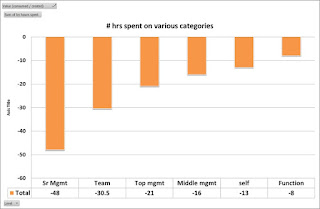This is a common idiom used, when
apparent differences between items which are thought to be incomparable such as
apples and oranges. I have come across
this many times at work and home, when questioned about performance, compared regions,
products, etc. I have used it many times
on to establish why my area of work is different to others, why the performance
/ results cannot be compared.
I am thinking, why we shouldn’t
compare Apples to Oranges; aren’t “disruptive” ideas born when we start comparing
unrelated things to achieve more? I feel
it is okay to (or should) compare “Apples to Oranges” to experiment on new
things and possibly excel. Some of the organisations
come to my mind who have compared themselves to unrelated things and possibly
be in the path of success.
- Amazon from booking selling online store to an IT service provider
- Google from search engine to possibly big player in automobile industry
- People like Neroli Fairhall paralysed from her waist down, Oscar Pistorius with both legs amputated participating in Olympic games (not only Paralympic games)
- Some of the inventions like airplane, nuclear power, our emails, etc
d
On the contrary, few organisations who ignored to compare Apples to Oranges; like the ones below;- Kodak once pioneer in the industry failed to transform in digital revolution
- Blackberry who had huge market share on smart handled, led way to Apple and Android
- Sony Walkman (don’t think the younger generation even remember)
- Many individuals surpassed you and me (for sure me) and we have decided not the compare and “stay put” .
l I recollect an old Tamil movie lyrics by writer Kannadasan, which
reads as “paravayai kandaan vimanam
padaithan, Ediroli keettan vaanoli padaithan” (translated in English
– Scientist compared the birds and invented airplane, listened to echo and invented radio) which
sounds like people dared to compare Apples to Oranges.
In summary, what I want to convey is let us not excuse ourselves saying, “ I am different”, “that is different” at the first instance.
In summary, what I want to convey is let us not excuse ourselves saying, “ I am different”, “that is different” at the first instance.
Do you think it is important to
compare "Apples to Oranges" at individual level and at organisations level? I am looking forward for your comments and
examples for YES and NO for comparisons.






